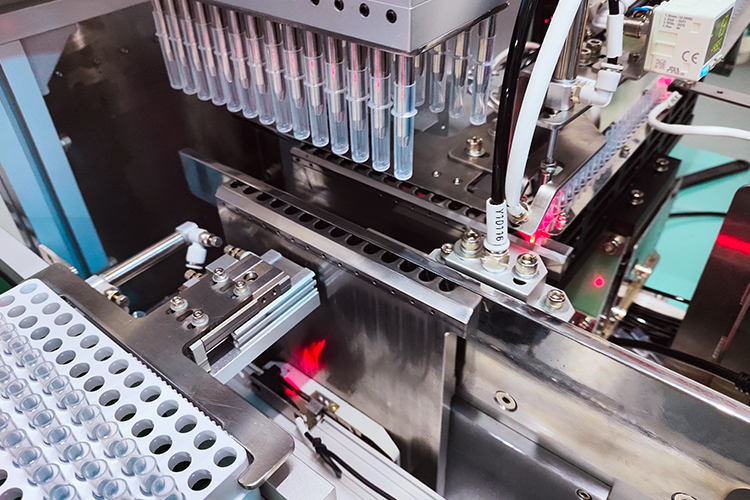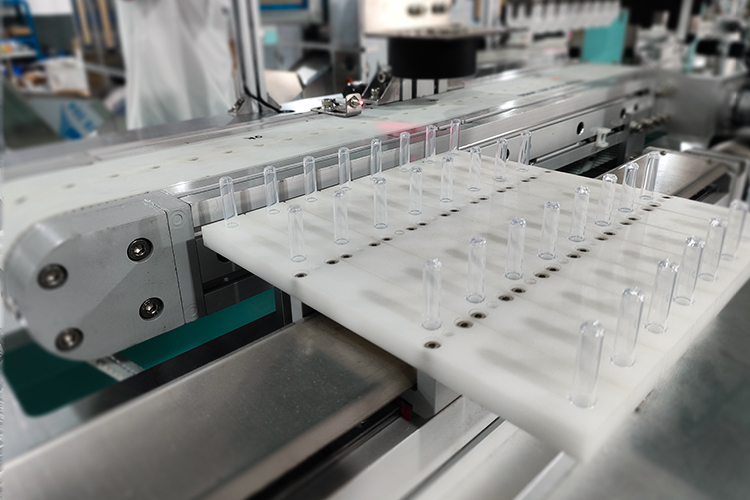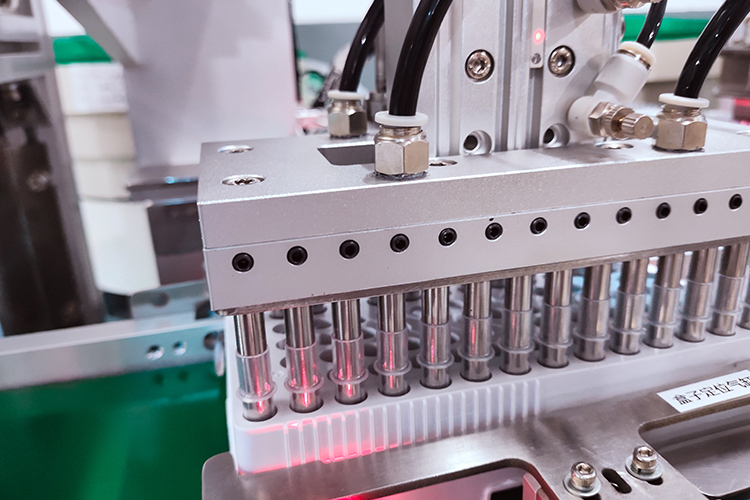Release Date:2025-03-20 14:28:08 Popularity:
In modern industrial manufacturing, production efficiency, product quality and cost control have become the core elements of enterprise competition. The traditional manual assembly method due to low efficiency, unstable quality, labor costs and other issues, it is difficult to meet the market demand for efficient, accurate and intelligent production. The emergence of automated assembly line makes the manufacturing towards the direction of unmanned, intelligent and flexible development, and becomes an important symbol of the industry 4.0 era.

I. Definition and working principle of automatic assembly line
1. Definition: Automated assembly line refers to the use of manipulators, robots, conveyor systems, testing equipment and intelligent control systems, in the case of minimal human intervention or completely unmanned operation, to achieve the automatic assembly, testing and packaging of the product production system. It is widely used in electronics, electrical appliances, automotive, medical equipment, hardware, food, packaging and other industries.
2. Working principle, the typical process of automatic assembly automatic production line includes:
1. Automatic feeding: through vibrating plate, belt conveyor or manipulator, the parts are orderly conveyed to the assembly station.
2. Automatic assembly: Utilizing manipulator, robot, screwing equipment, welding equipment, etc. to complete accurate assembly.
3. Automatic inspection: Adopt visual inspection system, laser scanning, pressure test and other technologies to ensure product quality.
4. Automatic packaging: automatically label, encapsulate and palletize qualified products, ready for storage or delivery.
5. Intelligent control: the production process is monitored and optimized in real time by PLC, MES or industrial internet system.
Second, the core advantages of automated assembly automatic production line
1. Improve production efficiency and reduce labor costs: fully automated operation, without human intervention, production efficiency is greatly improved. 24-hour uninterrupted production, significantly increasing production capacity. Reduce the dependence on labor, reduce manual errors and improve product consistency.
2. Improve assembly precision and ensure product quality: Adopt high-precision manipulator and intelligent inspection system to ensure assembly precision. Automatic inspection technology effectively eliminates defective products and improves product qualification rate. Standardize the production process to avoid quality fluctuations caused by human factors.
3. Realize intelligent management and remote monitoring: through industrial Internet, MES system, data collection and analysis, realize intelligent monitoring and remote management. Real-time visualization of equipment status and production data improves management efficiency. With self-diagnosis, self-repair function, reduce the failure rate.
4. Saving costs and improving economic efficiency: Reduce labor input and lower labor costs. Improve the utilization rate of raw materials, reduce waste, and optimize the allocation of production resources. Reduce rework and defective product rate, reduce production losses.
5. Adapt to the needs of multi-species, small batch production: the use of modular, flexible design, can be quickly adjusted to adapt to different products. Compatible with a variety of specifications and models of products, to achieve a production line for a variety of products assembly.

Third, the application fields of automatic assembly line
1. Electronic and home appliance industry: It is suitable for the automatic assembly and inspection of cell phone, computer, TV, electrical components and so on. It adopts intelligent tightening, welding, patching, testing and other technologies to improve product quality and assembly efficiency.
2. Automobile manufacturing and components industry: for automobile engines, transmissions, lights, instrument panels and other parts of the automatic assembly and testing. The use of robot assembly, automatic tightening, online testing, improve the accuracy and consistency of automotive manufacturing.
3. Medical equipment and pharmaceutical industry: applicable to the automatic assembly of medical syringes, sphygmomanometers, drug packaging and so on. It conforms to GMP standards and guarantees the sterility and safety of pharmaceutical production.
4. Hardware and machinery industry: It is suitable for automatic assembly of bearings, screws, fasteners and tools to improve production efficiency and product quality. It adopts automatic feeding, assembling and testing to reduce manual intervention.
5. Packaging and food industry: suitable for beverage filling, food packaging, daily necessities assembly and other automated production. The use of automatic packaging, labeling, sorting, improve food safety and packaging quality.
Fourth, the future development trend of automated assembly line
1. Deep integration of intelligent manufacturing and industrial Internet: the future production line will be fully connected to the industrial Internet, Internet of Things and 5G technology to realize remote control of equipment. Production data can be real-time monitoring, storage and analysis to improve the level of production intelligence.
2. Flexible manufacturing and customized production: the future production line will be more flexible and intelligent adjustment ability, can quickly adapt to different specifications of the product. The use of programmable robots and intelligent control, to achieve personalized custom production.
3. Green manufacturing and energy saving: Adopt energy-saving motors, low-energy processes and environmentally friendly materials to reduce energy consumption and carbon emissions. Combined with intelligent management system, optimize the use of energy and improve the level of production and environmental protection.
4. Highly integrated and unmanned: the future production line will be integrated with AGV intelligent logistics, automatic inspection, automatic packaging, to realize the whole process of unmanned. Through AI algorithm optimization, improve production efficiency and product quality.

As an important part of intelligent manufacturing, automated assembly automatic production line, with the advantages of high efficiency, high precision, low cost and intelligence, has been widely used in many industries such as electronics, automotive, medical, hardware, food and so on. In the future, with the development of intelligent manufacturing, industrial Internet, green technology, automated assembly production line will be more intelligent, flexible and efficient, bringing a new round of technological change and competitive advantage for global industrial manufacturing.